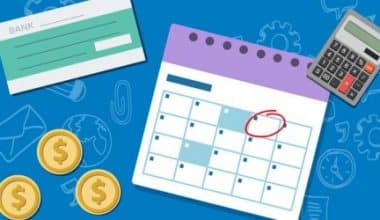How often have you sent an email and then waited… and then waited… and wondered what became of it? We’ve all done it.
It used to be common to have no idea what happened after we sent an email. Did it make it to our intended recipient? Is it possible that it got lost in their inbox? Is it in their junk mail folder? Did they open my attachments or click on my links?
Nobody knew… up to now. We now have both free and paid email tracking tools that notifies us whenever someone opens your emails, clicks on any links, or views any attachments.
It empowers us to create and sustain relationships in this overcrowded, competitive mailbox environment. This post is all about empowering your inbox with email tracking to increase email efficiency and productivity.
What is Email Tracking?
The technique of tracking sent emails and using that data to guide business choices is known as email tracking. Most email tracking tools collect information such as open rates, timings, and locations, as well as click-throughs on links and attachments.
What is the Process of Email Tracking?
When an email you sent is opened or clicked, email tracking tells you. Email tracking tools embeds an invisible picture pixel in your emails that can detect when and where an email was accessed by a recipient.
We’ll go over how to achieve this in more detail later, but first, let’s talk about why email tracking is useful.
The Advantages of Email Tracking
#1. Email tracking helps you save time.
Nobody likes to get many follow-up emails when they haven’t even opened the first. Email tracking allows you to know if your initial email piqued your recipient’s interest enough for them to open it. If they haven’t opened the first one, they’re unlikely to open subsequent ones, so you can and should stop there. It saves time for both the sales professional and the email recipient by reducing unnecessary follow-up emails.
Similarly, if you notice a contact clicking on the links you sent and examining a cover letter or proposal you attached, you know you’re on their mind right now. Reaching out to them at that time, when they are contemplating your idea, makes the interaction much more relevant and topical.
#2. Context is provided by email tracking.
Email tracking gives you vital information about your email interactions with contacts, networks, clients, and prospects. You may utilize this knowledge to improve your outreach by catering to their unique relationship with you.
If you notice that a contact has opened your email several times in a single day, you can follow up while you’re still on their mind.
You can see if your contact has read any links or attachments you included in an email before a meeting. You can tell if the recipient is evaluating what you sent if you issued a follow-up email.
#3. Email tracking offers a distinct perspective.
Let’s be honest: composing emails may be intimidating and irritating. It’s easy to become stuck on where to start or what to say to fill in the blanks.
Email tracking provides you with more than simply useful information about your contacts’ engagement with your emails. You can also view their career history, company details, Twitter feeds and other social profiles, email history with them, and any other information they choose to disclose with you.
How to Track an Email
It is simple to send a tracked email. We’ll look at how to track an email using email tracking tool.
#1. Establish company policies for email tracking.
Email tracking technology, for example, can be utilized to improve the customer experience, but it must be handled carefully. Set some ground rules with your team regarding how and when to contact a receiver after receiving a read notification.
It’s also a good idea to describe proper email tracking tool use in your company’s privacy policy and state that email tracking notifications are in use when consumers sign up for email subscriptions. These discussions and criteria should be created before you begin utilizing tools and should be re-examined regularly to guarantee you’re providing a decent client experience.
#2. Install an email tracking application.
There are several email tracking tools available on the market today, both free and paid software. They can also receive real-time updates on when and how many times your email is opened by a contact.
Oh, and it’s completely free.
#3. Create an email.
Begin typing now.
That is sometimes easier said than done…
#4. Select the “Track” option.
At this point, each email tracking tool operates in a slightly different manner. The majority of the tracking tools will have a similar checkbox or indicator that allows you to select which emails to track. Before sending an email or using email tracking, be sure the recipient has agreed to receive emails from your firm.
That’s all! With four simple actions, you can get control over what occurs after you send an email.
And, because we’re already talking about simple email tracking tools, let’s have a look at several free solutions to give you an idea of the many options you might want to try.
Best Free Email Tracking Tools
- Mailtrack
- Streak
- Hunter.io’s Mailtracker
- HubSpot
- Email Tracker Intelliverse
- SalesHandy
- Mailalert
#1. Mailtrack
Mailtrack is a Google Chrome extension that combines with your Gmail inbox to add green checkmarks to emails that are opened in the interface. It also offers desktop notifications and has no restriction on the number of emails you may track.
#2. Streak
Streak, another Gmail add-on, provides a useful sidebar with a visual activity record of email opens, view times, and even the geographical location where the receiver saw the message. You can also use Streak to categorize your messages by recent views (to see which prospects are the most interested) or to isolate email sends that have yet to receive a response (so you know who to follow up with).
#3. Hunter.io’s Mailtracker
Mailtracker allows you to see how many times an email was opened when it was opened, and on what device. Hunter.io guarantees that this email tracking tool will always be free and that it will never add a logo or other identifier to your emails.
#4. HubSpot
HubSpot is well-known for its robust sales platform, and email tracking is included in its array of free sales tools. You’ll be able to tell when a lead opens an email, clicks a link, or downloads an attachment using HubSpot email tracking.
This application is compatible with Gmail, Outlook, and Office365.
#5. Intelliverse Email Tracker
This email tracking tool is available as a Microsoft Outlook plugin or as a Chrome extension for Gmail. It displays when and where the email was opened, as well as the device data, all within your inbox. It will track an unlimited number of emails and send real-time notifications.
#6. SalesHandy
For up to 15 of your most recent records, SalesHandy delivers email open notifications and tracks activities. Gmail users can track emails for free and indefinitely, but you must upgrade to a commercial account to use the Outlook add-in.
#7. Mailalert
Mailalert is a Google Chrome addon that provides unlimited tracking while removing any branding or logos from the emails. Unlike some of the other tools on this list, it provides free click email tracking. It also provides real-time notifications and pushes alerts to assist you in achieving faster response times.
You configure tracked emails. So, what now?
We hear it all the time: “What should I say to the first person who reads my email?” What are some effective strategies to reach out? Second, what should I say? Is it appropriate for me to send an email? Should I make a phone call?
It depends, as is the case with any answer. Everyone uses these notifications in their own unique way. Here are some examples of use cases that we recommend.
#1. Begin a pertinent conversation.
The entire purpose of email intelligence tools is to assist you in making your content and timing more relevant to your recipients. Canned emails are not only impersonal but also ineffective. Target your material based on what you know about the recipients’ businesses and interactions with your firm. Stop if the first email isn’t opened. Nobody wants their mailbox to be clogged with follow-up emails if they haven’t opened the original one.
#2. Add more context after that.
Use the notifications to help you realize when you need to follow up with more information. Assume a contact clicked on a link regarding corporate culture; perhaps you might reach out with more information on the subject.
A personal touch never hurts, and a prospect may appreciate the fact that you anticipated their requirements or interests.
#3. Reduce the size of your email list.
If you find a contact hasn’t opened any of your recent emails, remove them from your mailing list or reach out one final time with a simple one-click unsubscribe option if they want to.
#7. Nothing should be done… It’s just useful to know.
Some users do not take any action after opening or clicking an email. The message just informs them that their contact is interacting with them and that there is no need to send a burdensome follow-up email.
Based on your total relationship with a contact, make this decision. If you’ve previously spoken with them or know they have all the information they require, simply leave them alone. There doesn’t have to be using email tracking software.
How has email tracking evolved over time?
The evolution of email tracking has been rapid in the last few years with more advanced features being added to tracking tools. Earlier, tracking was limited to just knowing whether an email was opened or not. But now, email tracking tools can provide more detailed insights such as location, device, and the amount of time spent on an email. With the advent of AI and machine learning, email tracking has become more sophisticated and is expected to continue to evolve in the future.
What are the best practices for using email tracking?
It’s important to use email tracking responsibly and ethically. Some best practices include informing recipients that their email is being tracked, using tracking data to improve the recipient experience, and avoiding excessive or intrusive tracking. Additionally, it’s important to ensure that the email tracking tool you use complies with privacy laws and regulations.
Can I track emails on my mobile device?
Yes, email tracking can be used on mobile devices as well. Most email tracking tools offer mobile apps or mobile-friendly versions of their web interface. This makes it easier for users to track emails on-the-go, regardless of whether they are using a smartphone or tablet.
How does email tracking impact email marketing campaigns?
Email tracking allows marketers to measure the success of their campaigns and make data-driven decisions. By tracking metrics such as open rates, click-through rates, and conversion rates, marketers can determine which elements of their campaign are working and which need improvement. This information can be used to optimize future campaigns and increase overall effectiveness.
What are the alternative methods for measuring email success?
There are several alternative methods for measuring email success, including surveys, customer feedback, and A/B testing. These methods provide valuable insights into how customers interact with your emails, but they may not be as comprehensive or real-time as email tracking data.
What are the drawbacks of using email tracking?
While email tracking has several benefits, there are also some drawbacks to consider. These include privacy concerns, the possibility of being perceived as intrusive or unethical, and the potential for tracking data to be used for malicious purposes. Additionally, relying solely on email tracking data can give an incomplete picture of email success and may not accurately reflect recipient behavior.
Summary
Email tracking can tell you when your prospects open your emails and when you should follow up. Both organizations and customers profit from email tracking. Businesses can use email tracking to traverse their inbox more productively, communicate more effectively, and ultimately develop and sustain important relationships. Customers can respond to emails without fear of receiving repeated follow-up emails.






